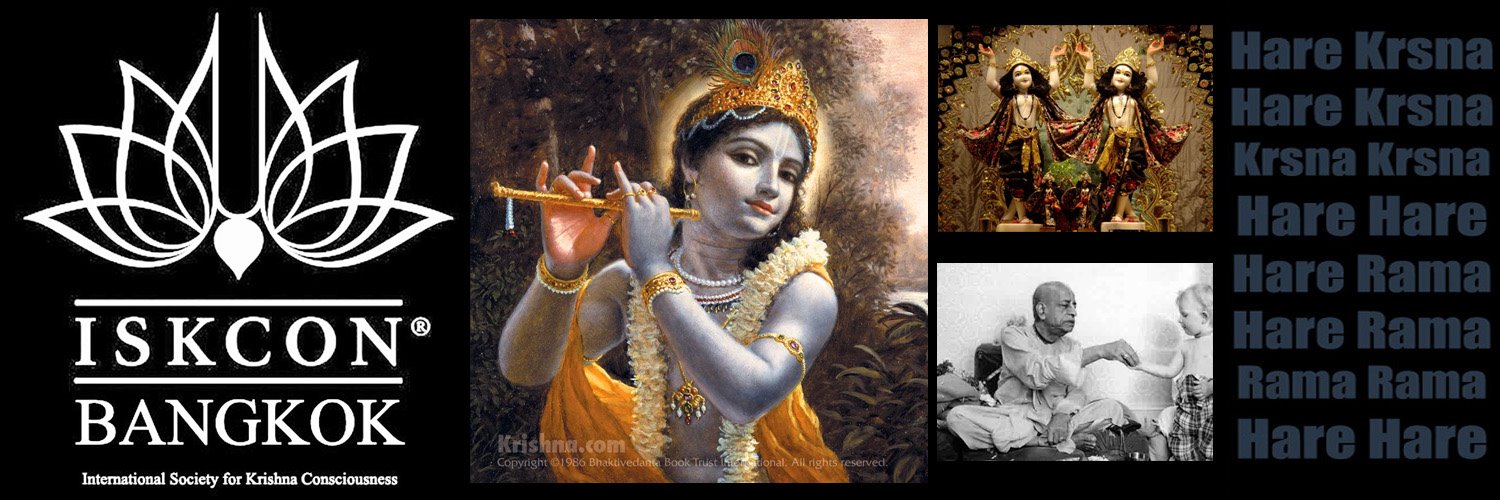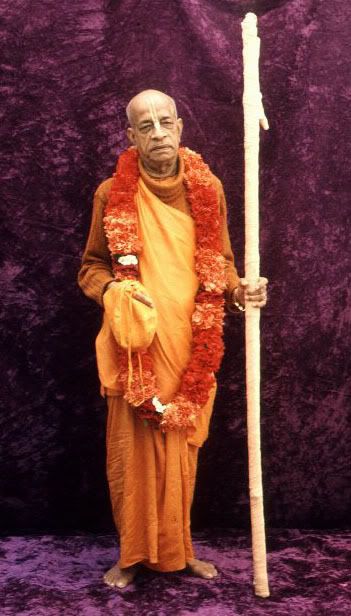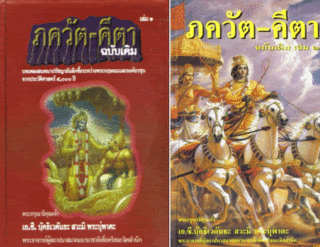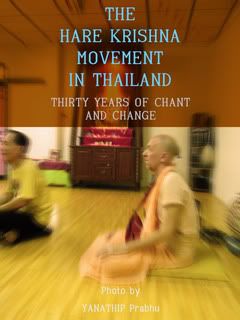

This procession wasn't part of Buddhist Lent but it was full of religious fervor.In Lumpini Park,incense and chanting filled the air and it could have been the 1960s all over again.Sari- clad women and saffron- robed men with shaved heads were clapping and
singing.Some threw packers of fruits and nuts to onlookers.With streaks of pale clay on their foreheads and nose,they thumped tambourines and banged cymbals.Their chorus " Hare Hare Om."
Forming an unusual sight,the Hare Krishnas,the famous and controversial religious group now referred to as the International Society for Krishna Counciousness ( ISKCON ),gathered by the scores in Bangkok on Sunday in honor of Lord Jagannath's Rathayatra,a festival celebrated by Hare Krishnas all over the world.It dates back 2000 years,and originated in the Jagannath temple,in Puri on the coast of India.Starting from Lumpini Park they formed an exuberant procession wended its way along Wireless,Sarasin and Ratchadamri roads,culminating at the Hindu Samaj temple near the Giant Swing.
"Nama Om Vishnu Pradaya Krishna Pristaya Buthalay Shrimathaya"("I offer my respectful obeisance to his divine Grace"),said a Hare Krishna devotee into a mike,leading the chorus in the procession.Many hawkers and passersby in the street gave respectful wais as they caught packets of sweet meats.
"Nama Om Vishnu Pradaya Krishna Pristaya Buthalay Shrimathaya"("I offer my respectful obeisance to his divine Grace"),said a Hare Krishna devotee into a mike,leading the chorus in the procession.Many hawkers and passersby in the street gave respectful wais as they caught packets of sweet meats.
At the tail of the procession was a Toyota truck bearing a shrine with the images of deities Balarama, Subadra, and the main idol of Jagannath, depicted as ablack figure with round eyes Thecrowd was mostlyethnic Indian with a smattering of Thais and foreigners who had come from abroad to join the festivities.
Yet in Lumpini Park,it is not quite the 1960s all over again.For one,there aren't as many people wearing the famous saffron robes - a sign that devotee has sworn to be celibate( devotees during the 1960s and 1970s frequently took them selves out of secular society).Many of the men are wearing white gowns,an indication that they are"householders" - that they wives and families.
They were also leaving scandal in their vake,Rocked to its foundations by allegations of child sex abuse in the US and India that resulted in a class - action lawsuit in 2001,the abuse is said to have occurred in boarding schools during the 1960s and 1970s.
After many children raised in Hare Krishna boarding schools came forward to testify that they had been abused,its spokespersons have been quoted in the media as admitting to the abuse.Its leaders have,their credit,apologized.The Hare Krishna movement offered support and financial compensation to victims.However,many victims quoted in various news channels say the perpettrators have yet to be brought to justice.
Now scattered across the globe,with pockets in India, North America and Europe, ISKCON claims a million adherents around the world, although many experts say its numbers are probably much smaller. Today, the lifestyle imposed on devotees is less austere and its followers are less likely to be concerned with " converting " the masses.Many lead secular lives, and are almost indistinguishable from their co - workers in dress and habits.
The story of how the Hare Krishna movement got started is legendary among its adherents even today.Propagated by Bhaktivedanta Swami Prabhupada,a guru preaching a type of Hindu monotheism known as Gaudiya Vaishnava,Prabhupada set sail for the US from India with only a few rupees in his pocket in 1965.Prabhupada drew from the ideas of a 15th century Bengali monk by the name of Sri Caitanya Mahaprabhu, whose principles were based on an ascetic lifestyle and the chanting of Krishna's name.
Many of Prabhupada's followers embraced his philosophy with missionary fervor, some leading monastic lives. In the 1960s and 1970s, Hare Krishna followers were known for selling books at airports, cutting ties with society and sending their children to boarding schools in order to concentrate on spiritual enlightenment.
In Thailand, the first Hare Krishna missionaries were mostly Europeans - not Indian - and arrived around 30 years ago, settling in Soi Puthaosot, Sri Phraya. Most would proselytize for a year or two before leaving, dogged by visa and language problems.
Today, claims its followers, the movement has grown into thethousands, although this figure is impossible to verify due to a lack of official records. However, Ram Laksman, a senior figure with ISKCON, says that Bangkok has about six "house programs." One of these is based in Lumpini Park, where 50 to 60 members gather every sunday to chant Krishna's name, listen to sermons and partake in prasadam - vegetarian food.
A Hare Krishna follower typically adheres to four principles : abstension from gambling, drinking alcohol or caffeinated drinks, the eating of meat and eggs, and lastly, sex, with the exception of for the purpose of procreation and that only within marriage. Those that choose to serve at temples normally rise before dawn to begin a day of chanting and meditating.
"Everyone can be a deevotee of Krishna, which gives bliss through the chanting of the Lord's name," say Laksman, who is 60 but looks at least 10 years younger. Dressed in a white robe with bright red trim and wearing trainers for the procession, Laksman, who is ethnically Thai, changed his name from Rod Jitchotvisut when he became a Hare Krishna follower after meeting some devotees in front of the White House some 30 years ago.He was traveling in the US to get a taste of the world and later obtained a degree in business studies at the North Eastern Illinois University.
Today, he keeps his prayer beads in a handkerchief he carries with him at all times. He counts the 108 beads, chanting 16 recitations of the names of God every day, a process which takes him two hours. "The teachings are perfect and powerful. Through them you can be free. But to come to that part takes a lot, "he says. When he's not at the temple or with other devotees, Laksman can be found at the Bo Bae market in jeans and a T - shirt, selling underwear.









ไม่มีความคิดเห็น:
แสดงความคิดเห็น
แสดงความคิดเห็นได้ที่นี่